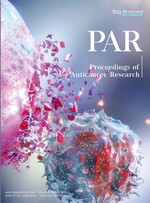Abstract
Huntington’s disease (HD) is an irreversible neurodegenerative disorder that is inherited in an autosomal dominant manner. In HD, many regions of the human brain are affected, including the striatum, thalamus, and cortex. The mechanism is by the expansion of CAG repeats, which encode glutamine (Q) in the Huntingtin gene on chromosome 4p16.3. Patients with more CAG repeats tend to have a younger age of onset and a higher risk. Mutant HTT protein, translated from mtHtt, would congregate or interact with other proteins, causing damage to the human body. Patients with HD show symptoms like chorea, which is an involuntary motor disability, cognitive deterioration, and psychiatric disturbances. Except for the genetic pathology of HD, the epigenetic mechanism of this disease has made a lot of progress in recent years. This paper primarily focuses on the alternation of deoxyribonucleic acid (DNA) methylation, histone modification, and non-coding ribonucleic acids (ncRNAs) in HD as well as the advancements of epigenetic therapy and healthcare in HD.
References
Deans C, Maggert K, 2015, What Do You Mean, “Epigenetic”. Genetics, 199(4): 887–896.
Portela A, Esteller M, Epigenetic Modifications and Human Disease. Nature Biotechnology, 28(10): 1057–1068.
Zhang G, Pradhan S, 2014, Mammalian Epigenetic Mechanisms. International Union of Biochemistry and Molecular Biology, 66(4): 240–256.
Lardenoije R, Iatrou A, Kenis G, et al., 2015, The Epigenetics of Aging and Neurodegeneration. Progress in Neurobiology, 131: 21–64.
Lennartsson A, Ekwall K, 2009, Histone Modification Patterns and Epigenetic Codes. Biochim Biophys Acta, 1790(9): 863–868.
Thomas EA, 2016, DNA Methylation in Huntington’s Disease: Implications for Transgenerational Effects. Neuroscience Letters, 625: 34–39.
Bassi S, Tripathi T, Monziani A, et al., 2017, Epigenetics of Huntington’s Disease. Advances in Experimental Medicine and Biology, 978: 277–299.
Guibert S, Weber M, 2013, Functions of DNA Methylation and Hydroxymethylation in Mammalian Development. Current Topics in Developmental Biology, 104: 47–83.
Glajch KE, Sadri-Vakili G, 2015, Epigenetic Mechanisms Involved in Huntington’s Disease Pathogenesis. Journal of Huntington’s Disease, 4(1): 1–15.
Attwood JT, Yung RL, Richardson BC, 2002, DNA Methylation and the Regulation of Gene Transcription. Cellular and Molecular Life Sciences CMLS, 59(2): 241–257.
Zsindely N, Siagi F, Bodai L, 2021, DNA Methylation in Huntington’s Disease. International Journal of Molecular Sciences, 22(23): 12736.
Ng CW, Yildirim F, Yap YS, et al., 2013, Extensive Changes in DNA Methylation are Associated with Expression of Mutant Huntingtin. Proceedings of the National Academy of Sciences, 110(6): 2354–2359.
Lee J, Hwang YJ, Kim KY, et al., 2013, Epigenetic Mechanisms of Neurodegeneration in Huntington’s Disease. Neurotherapeutics, 10(4): 664–676.
Villar-Menendez I, Blanch M, Tyebji S, et al., 2013, Increased 5-Methylcytosine and Decreased 5-Hydroxymethylcytosine Levels Are Associated with Reduced Striatal A2AR Levels in Huntington’s Disease. Neuromolecular Medicine, 15(2): 295–309.
Thomas B, Matson S, Chopra V, et al., 2013, A Novel Method for Detecting 7-Methyl Guanine Reveals Aberrant Methylation Levels in Huntington Disease. Analytical Biochemistry, 436(2): 112–120.
Dokmanovic M, Clarke C, Marks P, 2007, Histone Deacetylase Inhibitors: Overview and Perspectives. Molecular Cancer Research, 5(10): 981-989.
Kuo M, Allis C, 1998, Roles of Histone Acetyltransferases and Deacetylases in Gene Regulation. Bioessays, 20(8): 615–626.
Sadri-Vakili G, Cha J, 2006, Mechanisms of Disease: Histone Modifications in Huntington’s Disease. Nature Clinical Practice Neurology, 2(6): 330–338.
Francelle L, Lotz C, Outeiro T, et al., 2017, Contribution of Neuroepigenetics to Huntington’s Disease. Frontiers in Human Neuroscience, 11(17): 17.
Valor L, 2016, Understanding Histone Deacetylation in Huntington’s Disease. Oncotarget, 8(4): 5660–5661.
Moumne L, Betuing S, Caboche J, 2013, Multiple Aspects of Gene Dysregulation in Huntington’s Disease. Frontiers in Neurology, 4: 127.
Varela MA, Roberts TC, Wood MJ, 2013, Epigenetics and ncRNAs in Brain Function and Disease: Mechanisms and Prospects for Therapy. Neurotherapeutics, 10(4): 621–631.
Bae BI, Xu H, Igarashi S, et al., 2005, P53 Mediates Cellular Dysfunction and Behavioral Abnormalities in Huntington’s Disease. Neuron, 47(1): 29–41.
La Spada AR, Morrison RS, 2005, The Power of the Dark Side: Huntington’s Disease Protein and p53 Form a Deadly Alliance. Neuron, 47(1): 1–3.
Johnson R, Zuccato C, Belyaev ND, et al., 2008, A microRNA-Based Gene Dysregulation Pathway in Huntington’s Disease. Neurobiology of Disease, 29(3): 438–445.
McColgana P, Tabrizi SJ, 2018, Huntington’s Disease: A Clinical Review. European Journal of Neurology, 25: 24–34.
Gray S, 2011, Targeting Huntington’s Disease Through Histone Deacetylases. Clinical Epigenetics, 2(2): 257–277.
Mielcarek M, Benn C, Franklin S, et al., 2011, SAHA Decreases HDAC 2 and 4 Levels In Vivo and Improves Molecular Phenotypes in the R6/2 Mouse Model of Huntington’s Disease. PLoS ONE, 6(11): e27746.
McFarland K, Das S, Sun T, et al., 2013, Genome-Wide Increase in Histone H2A Ubiquitylation in a Mouse Model of Huntington’s Disease. Journal of Huntington’s Disease, 2(3): 263–277.
Thomas E, Coppola G, Desplats P, et al., 2008, The HDAC Inhibitor 4b Ameliorates the Disease Phenotype and Transcriptional Abnormalities in Huntington’s Disease Transgenic Mice. Proceedings of the National Academy of Sciences, 105(40): 15564–15569.
